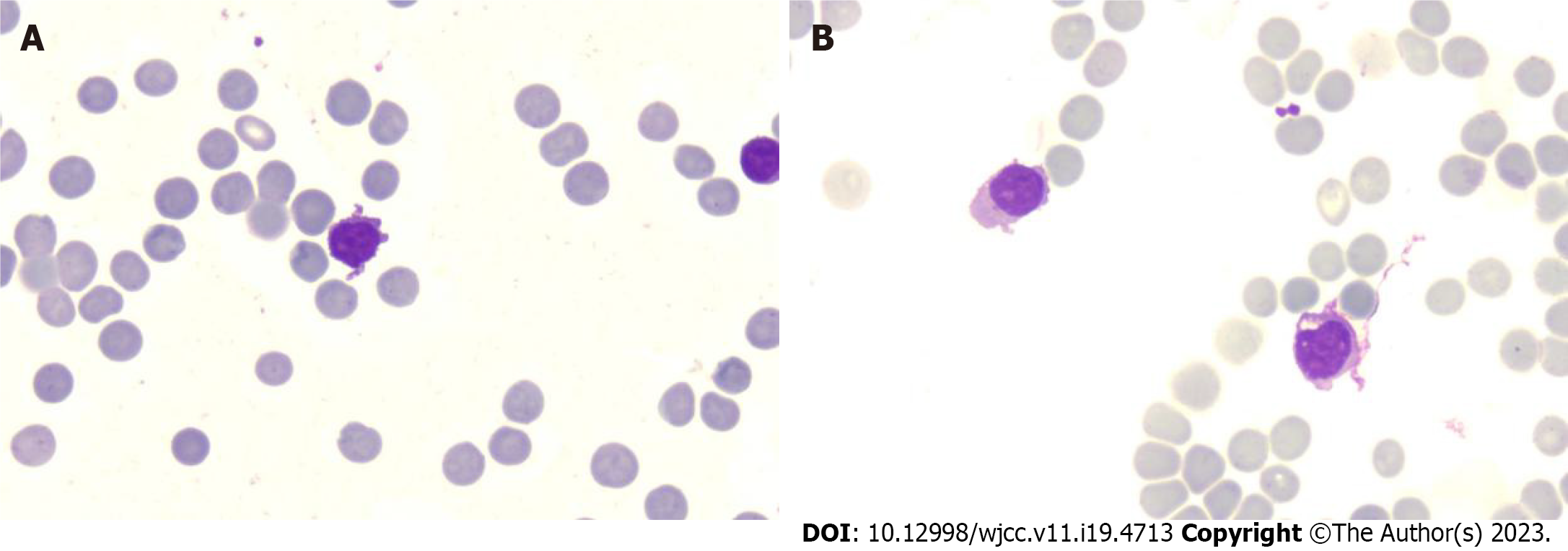Copyright
©The Author(s) 2023.
World J Clin Cases. Jul 6, 2023; 11(19): 4713-4722
Published online Jul 6, 2023. doi: 10.12998/wjcc.v11.i19.4713
Published online Jul 6, 2023. doi: 10.12998/wjcc.v11.i19.4713
Figure 1 Morphological evaluation of bone marrow and blood smears during aplastic crisis.
A: The bone marrow was aplastic, with sparsely distributed atypical lymphocytes, which accounted for 77% of all nucleated cells. The chromatin of the atypical lymphocytes was highly concentrated, the cytoplasm was excessively abundant, with eosinophilic shade on the basophilic background and most prominently adjacent to the nucleoli without visible granules, and the membrane was canthous, indicating the activation of lymphocytes. Basophilic substances were present in the cytoplasm of almost all mature erythrocytes, suggestive of dysplasia in erythropoiesis. The leukemic cells disappeared. Immunotyping analysis revealed that these atypical lymphocytes expressed a high frequency of cluster of differentiation (CD)3, CD4, CD8, CD5, CD56 and CD57, indicating the activation and expansion of autoimmune cytotoxic T-lymphocytes and natural killer (NK)/NKT cells that suppressed both normal and leukemic hematopoiesis; B: There were predominately atypical lymphocytes in the blood smears, and granulocytes were seldom visualized. Dyserythropoiesis can also be visualized in the blood smears.
- Citation: Sun XY, Yang XD, Xu J, Xiu NN, Ju B, Zhao XC. Tuberculosis-induced aplastic crisis and atypical lymphocyte expansion in advanced myelodysplastic syndrome: A case report and review of literature. World J Clin Cases 2023; 11(19): 4713-4722
- URL: https://www.wjgnet.com/2307-8960/full/v11/i19/4713.htm
- DOI: https://dx.doi.org/10.12998/wjcc.v11.i19.4713









